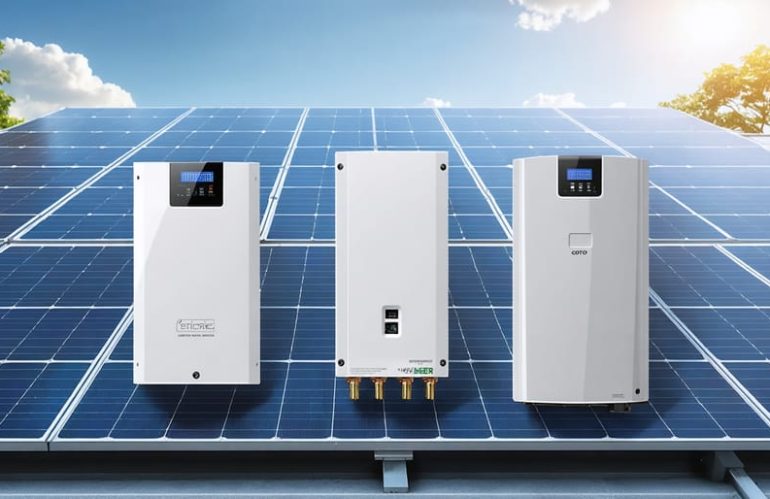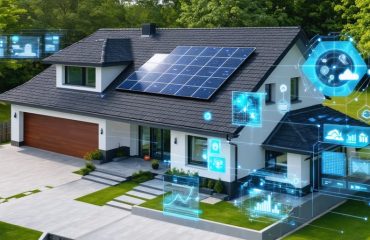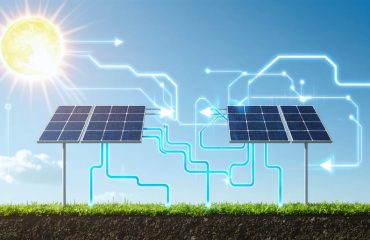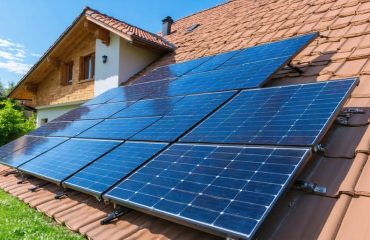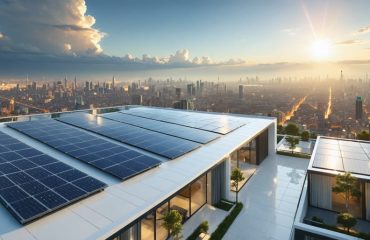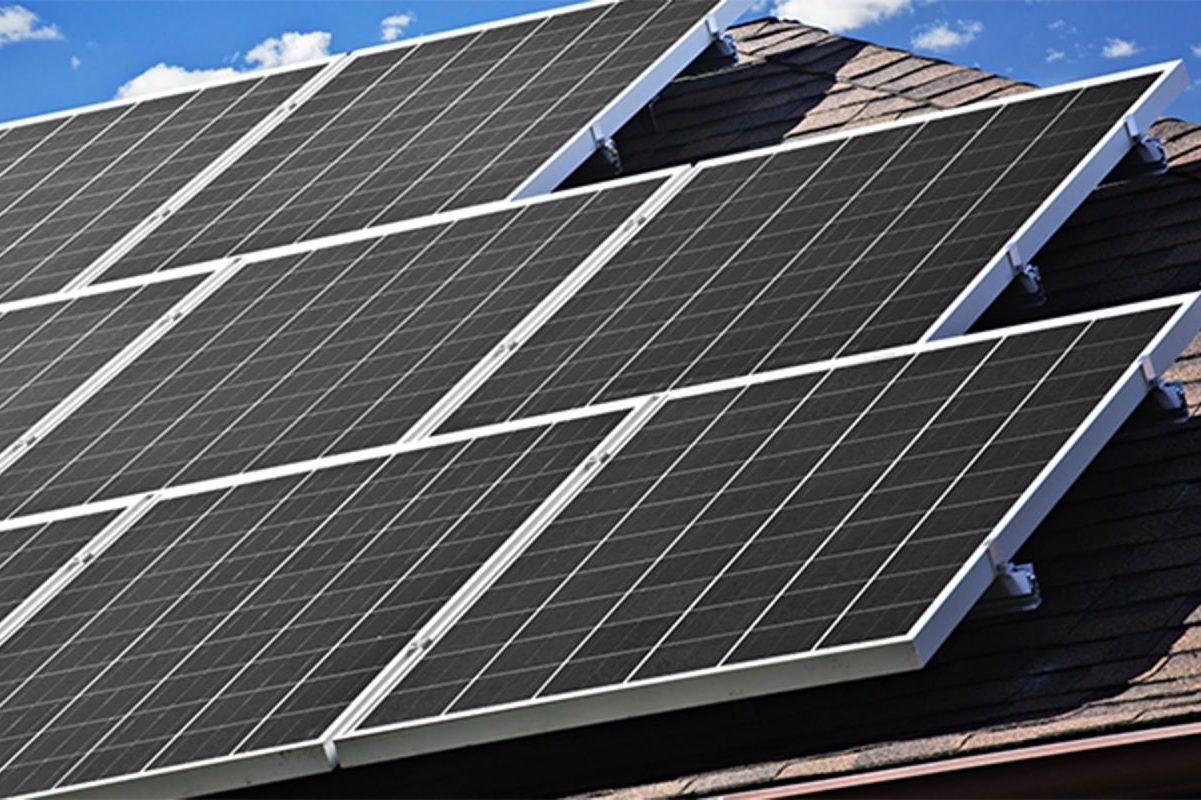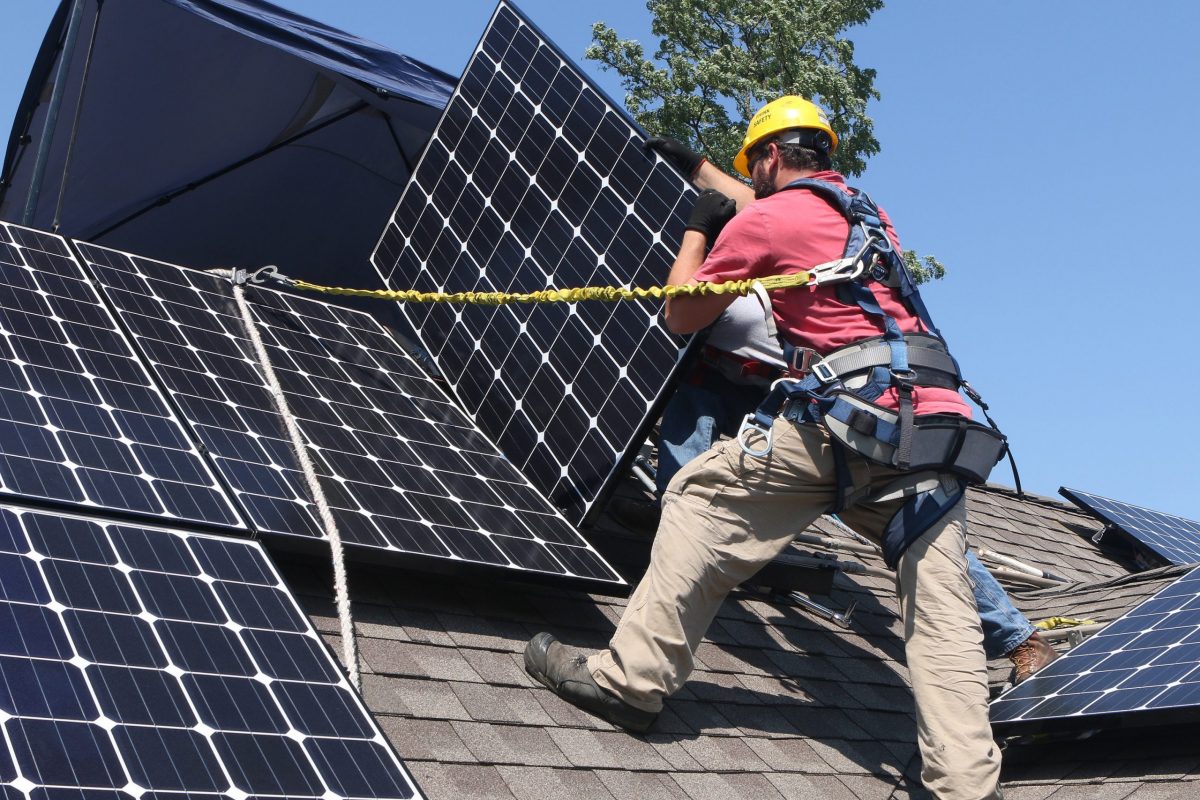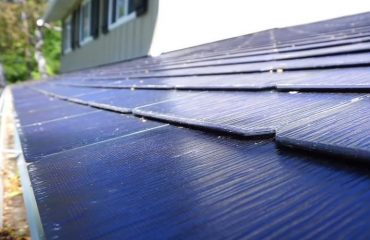Choosing the right solar inverter directly impacts your system’s efficiency, energy savings, and long-term reliability. The crucial role of inverters extends beyond simply converting DC to AC power – they’re the brains of your entire solar setup. Modern inverters now offer advanced monitoring capabilities, smart home integration, and performance optimization features that can boost energy production by up to 30%.
Today’s market leaders like SolarEdge, Enphase, and Fronius have revolutionized solar technology with solutions that maximize energy harvest while providing unprecedented system visibility. Whether you’re installing a modest 5kW residential system or a larger home setup, selecting the right inverter involves balancing factors like warranty coverage, efficiency ratings, and smart features against your specific needs and budget.
This guide cuts through the technical jargon to help you understand exactly which inverter type – string, microinverter, or hybrid – will deliver the best return on your solar investment. We’ll examine real-world performance data, compare leading brands, and provide clear recommendations based on system size, roof configuration, and energy goals.
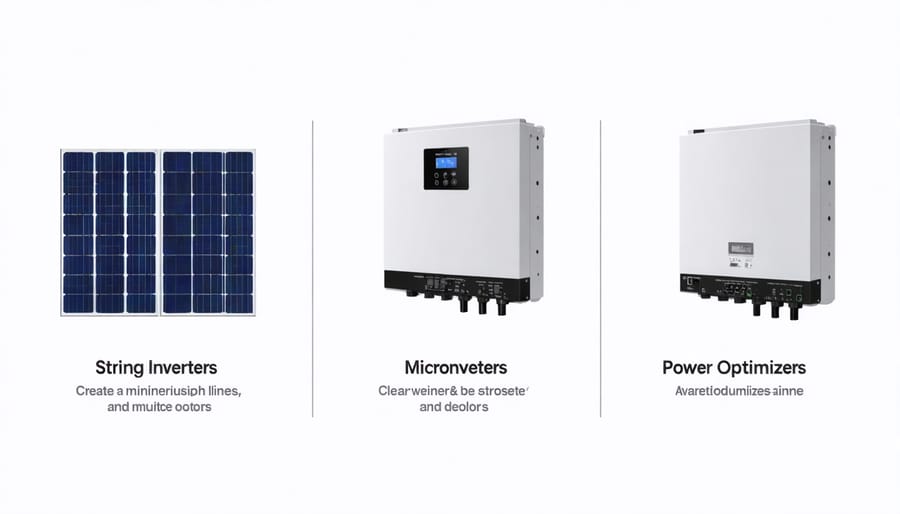
Understanding Solar Inverter Types
String Inverters: The Traditional Choice
String inverters have been the backbone of residential solar installations for decades, and for good reason. These reliable workhorses convert DC power from your solar panels into usable AC electricity for your home through a single, central unit. Think of them as the heart of your solar system, efficiently managing power from multiple panels connected in a series.
One of the biggest advantages of string inverters is their cost-effectiveness. They’re typically more affordable than other options and are straightforward to maintain. Their simple design means fewer components that could potentially need repair, making them a practical choice for many homeowners.
String inverters work best when your roof has minimal shade and all panels face the same direction. They’re particularly ideal for homes with large, unobstructed south-facing roofs where panels can perform at their peak. While they may not offer panel-level monitoring like some newer technologies, they provide reliable overall system performance monitoring that meets most homeowners’ needs.
These inverters are also compact and can be easily mounted in your garage or on an exterior wall, taking up minimal space while quietly converting solar power into clean electricity for your home.
Microinverters: Maximum Performance
Microinverters offer a smart solution for homeowners dealing with complex roof layouts or partial shading issues. Unlike string inverters, these compact devices are installed underneath each solar panel, allowing each panel to operate independently. This means if one panel is shaded by a chimney or tree, the others continue working at full capacity.
The beauty of microinverters lies in their ability to maximize energy production from every single panel. They’re particularly effective for roofs with multiple angles or orientations, as each panel can perform optimally regardless of its position. This flexibility often results in higher overall system efficiency and increased energy production.
While typically more expensive upfront than string inverters, microinverters offer superior monitoring capabilities, allowing you to track the performance of individual panels through user-friendly apps. They also tend to last longer, with warranties typically ranging from 20-25 years, matching the lifespan of your solar panels.
For homes with challenging roof designs or those planning future system expansions, microinverters provide an excellent foundation for a reliable, high-performing solar installation.
Power Optimizers: The Hybrid Solution
Power optimizers offer a clever compromise between string and microinverters, combining the best of both worlds. These devices attach to individual solar panels like microinverters but work alongside a central string inverter rather than converting power independently.
The main advantage of power optimizers is their ability to maximize each panel’s performance while maintaining the cost-effectiveness of a string inverter system. When shade falls on one panel or it becomes dirty, power optimizers ensure that only that specific panel’s output is affected, preventing the entire string from underperforming.
For homeowners with partially shaded roofs or multiple roof orientations, power optimizers present an excellent middle-ground solution. They’re typically more affordable than microinverters while offering similar panel-level monitoring capabilities. This means you can track the performance of individual panels through your monitoring system, making it easier to identify and address any issues that arise.
Most power optimizers come with 25-year warranties, matching the lifespan of your solar panels and providing long-term peace of mind for your investment.
Key Features That Matter
Efficiency Ratings
When choosing a solar inverter, conversion efficiency is a crucial factor that directly impacts your system’s overall performance. Modern solar inverters typically achieve efficiency ratings between 95% and 98%, meaning they convert most of the DC power from your panels into usable AC power. To maximize system performance, look for inverters with efficiency ratings of 96% or higher.
Higher efficiency ratings translate to more power output and better cost savings over time. Even a small difference in efficiency can significantly impact your energy production over the system’s lifetime. Premium inverters with top-tier efficiency ratings might cost more initially but often prove more economical in the long run through improved system efficiency and energy generation.
Consider factors like temperature performance and part-load efficiency, as inverters operate at varying power levels throughout the day. The best inverters maintain high efficiency across different operating conditions, ensuring consistent performance year-round.
Warranty Coverage
Warranty coverage is a crucial factor when selecting a solar inverter, as it protects your investment for years to come. Most premium solar inverters come with warranties ranging from 5 to 12 years, with some manufacturers offering extended coverage options up to 25 years. Leading brands typically provide 10-year standard warranties, which covers both parts and labor for manufacturing defects.
Look for warranties that explicitly cover performance degradation and include straightforward replacement terms. The best warranties offer advanced replacement options, meaning you’ll receive a replacement unit before sending back the defective one, minimizing system downtime. Be sure to check if the warranty includes installation costs and on-site service.
Pay attention to the warranty’s fine print regarding environmental conditions, installation requirements, and maintenance schedules. Some manufacturers require professional installation and regular maintenance to maintain warranty coverage. Remember that a longer warranty period often indicates the manufacturer’s confidence in their product’s reliability and longevity.
Smart Monitoring Capabilities
Modern solar inverters come equipped with sophisticated monitoring capabilities that put system control right at your fingertips. Through user-friendly smartphone apps and web portals, you can track your solar system’s performance in real-time, viewing detailed data about energy production, consumption, and savings. These smart features alert you to any performance issues or maintenance needs, ensuring your system operates at peak efficiency.
Many inverters offer cloud connectivity, allowing you to monitor your system remotely and receive instant notifications if something needs attention. You can easily check how much energy you’re generating, analyze historical performance data, and even compare your system’s output with expected yields based on weather conditions.
Some advanced monitoring systems also provide panel-level tracking, helping you identify underperforming panels quickly. This detailed insight helps maximize your investment by ensuring every component of your solar system works optimally, while making it easier to demonstrate energy savings and calculate your return on investment.
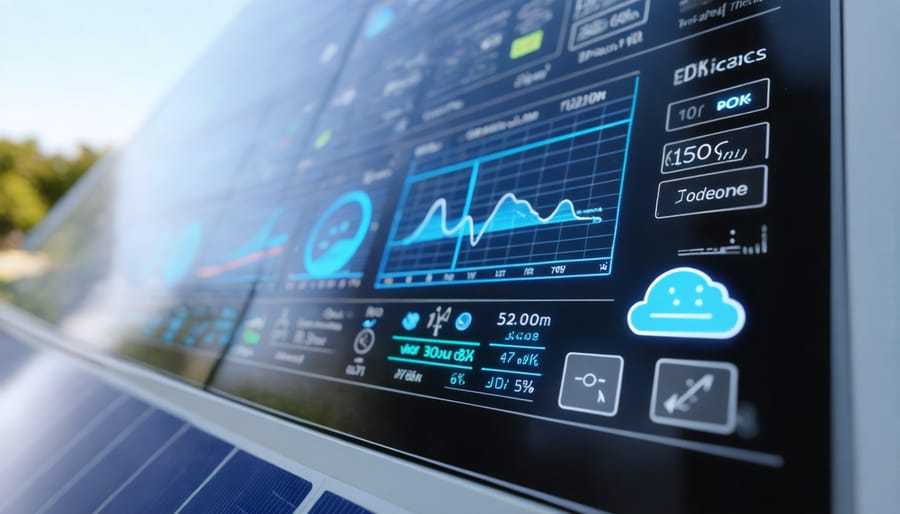
Size and Compatibility
When selecting an inverter, size matching is crucial for optimal system performance. A general rule of thumb is to choose an inverter with a capacity between 75-100% of your solar array’s DC rating. For example, if you have a 6kW solar panel system, an inverter rated between 4.5kW to 6kW would be appropriate.
Undersizing your inverter slightly (known as power clipping) can actually be cost-effective, as solar panels rarely produce their maximum rated power. However, oversizing your inverter can lead to reduced efficiency and unnecessary expenses.
Climate and panel orientation also affect sizing decisions. In areas with less direct sunlight, you might opt for an inverter closer to your array’s size, while sunny regions can tolerate more conservative sizing. Consider future expansion too – if you plan to add more panels later, choosing a slightly larger inverter now could save money down the road.
Remember that your local climate, roof configuration, and energy goals should guide your final decision. When in doubt, consult with a solar professional for precise sizing recommendations.
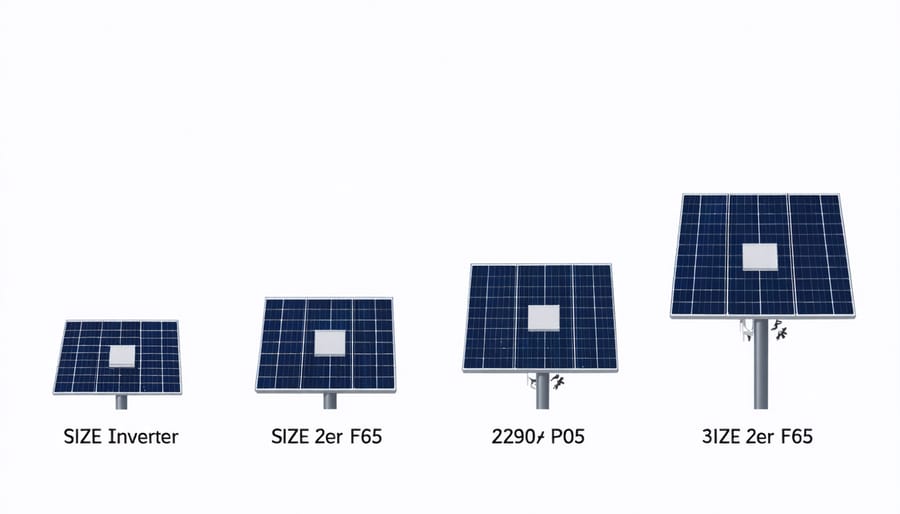
Top Inverter Recommendations
Best for Small Systems
For smaller solar installations typically under 4kW, microinverters and compact string inverters offer the most efficient and cost-effective solutions. The Enphase IQ7+ microinverter stands out as a top choice, delivering excellent performance for single-panel optimization while keeping installation simple and scalable. Its compact size and reliability make it perfect for residential systems with limited roof space.
If you prefer a string inverter, the SMA Sunny Boy 3.0-US is an outstanding option for small systems. It offers built-in shade management, high efficiency, and a secure power supply feature that provides up to 2,000 watts of power during grid outages – a valuable backup option for essential appliances.
For budget-conscious homeowners, the Growatt MIN 3000TL-X provides reliable performance at a more affordable price point. It includes smart monitoring features and a user-friendly interface, making it easy to track your system’s performance through a smartphone app.
Remember that smaller systems benefit particularly from optimizers or microinverters, as they can maximize energy production from each panel, especially important when working with limited roof space or partial shading conditions.
Ideal for Large Installations
For larger residential installations typically requiring 10kW or more of power, string inverters with multiple Maximum Power Point Tracking (MPPT) inputs are the go-to choice. These robust systems efficiently handle higher power loads while maintaining optimal performance across multiple solar panel arrays.
Three-phase string inverters from manufacturers like SMA, Fronius, and SolarEdge are particularly well-suited for these installations. They offer superior power handling capabilities, typically ranging from 10kW to 50kW, making them perfect for spacious homes with high energy demands or properties with multiple buildings.
These larger systems often come with advanced monitoring features, allowing homeowners to track performance across different solar arrays independently. Many also include built-in smart grid compliance features, which can be essential for larger installations that need to meet utility requirements.
While the initial investment might be higher, these systems typically offer better long-term value through improved efficiency and lower cost per watt. They also provide the flexibility to expand your solar system in the future, making them an excellent choice for growing energy needs.
For maximum reliability, consider models with integrated cooling systems and robust weather protection, as these features help maintain performance even under demanding conditions.
Best Value for Money
When it comes to getting the most bang for your buck, several inverter models stand out in the market. The SolarEdge HD-Wave and Fronius Primo series offer excellent performance at mid-range prices, typically costing between $1,000 and $1,500. These inverters deliver reliable efficiency above 97% while including essential monitoring features and solid warranty coverage.
For budget-conscious homeowners, the GoodWe DNS series provides impressive value, offering many features of premium inverters at a more accessible price point. While they may lack some advanced monitoring capabilities, they maintain high reliability and efficiency ratings that rival more expensive options.
It’s worth noting that the cheapest option isn’t always the most cost-effective in the long run. Look for inverters with at least a 10-year warranty and proven track records of durability. Brands like Delta and SMA offer slightly older models that, while not cutting-edge, provide excellent reliability at reduced prices.
Consider also that some mid-range inverters come with built-in energy management systems, potentially saving you money on additional smart home devices while maximizing your solar system’s efficiency.
Premium Choice
For homeowners seeking top-tier performance and advanced functionality, premium inverters like the SMA Sunny Boy and Fronius Primo offer exceptional value. These high-end models feature cutting-edge monitoring systems that provide detailed real-time energy production data right to your smartphone. They typically boast efficiency ratings above 98% and come with extended warranties of up to 10-15 years, offering outstanding peace of mind.
Premium inverters stand out with their smart features, including advanced grid integration capabilities and built-in shade management technology. Many include sophisticated safety features like arc fault protection and rapid shutdown compliance. The SolarEdge HD-Wave, for instance, combines premium efficiency with power optimization technology, ensuring maximum energy harvest even when some panels are shaded.
While these options come with a higher upfront cost, ranging from $2,000 to $3,500, their superior efficiency and durability often result in better long-term savings. They’re particularly valuable for larger solar installations or complex roof configurations where maximizing energy production is crucial. The additional monitoring capabilities and remote troubleshooting features also mean fewer maintenance visits and reduced operational costs over time.
Making Your Final Decision
When it’s time to make your final inverter choice, consider your specific situation and priorities. Start by evaluating your budget, as this will help narrow down your options. Remember that while premium inverters may cost more initially, they often provide better efficiency and longer warranties, potentially saving you money in the long run.
Next, assess your roof space and shading conditions. If your panels will face different directions or experience partial shading, a microinverter or power optimizer system might be your best choice despite the higher cost. For unobstructed, similarly-oriented panels, a string inverter could offer excellent value.
Consider your monitoring needs and future expansion plans. Some inverters offer sophisticated monitoring capabilities through user-friendly apps, while others provide basic functionality. If you’re planning to add more panels or battery storage in the future, ensure your chosen inverter can accommodate these upgrades.
Don’t forget to check the inverter’s warranty and the manufacturer’s reputation. A 10-year warranty is standard, but some premium brands offer up to 25 years. Research the manufacturer’s track record for reliability and customer service.
Finally, consult with several qualified solar installers. They can provide specific recommendations based on your local climate, utility requirements, and system size. Their experience with different brands and models can offer valuable insights into real-world performance and reliability.
Choosing the right inverter is a crucial step in creating an efficient and reliable solar power system for your home. Whether you opt for a string inverter for its cost-effectiveness, microinverters for their optimization capabilities, or a hybrid inverter for energy storage flexibility, each option offers unique advantages for different situations. Remember to consider your roof configuration, shade conditions, budget, and future expansion plans when making your decision.
For optimal results, focus on reputable brands, warranty coverage, and efficiency ratings while ensuring your chosen inverter matches your solar array’s size and your energy goals. Don’t forget to factor in your local climate conditions and installation requirements. To move forward with your solar journey, consult our complete solar installation guide and work with certified installers who can provide personalized recommendations based on your specific needs.
By making an informed decision about your inverter choice today, you’re investing in a more sustainable and cost-effective energy future for your home. Take the next step by requesting quotes from multiple installers and comparing their recommended inverter solutions.

